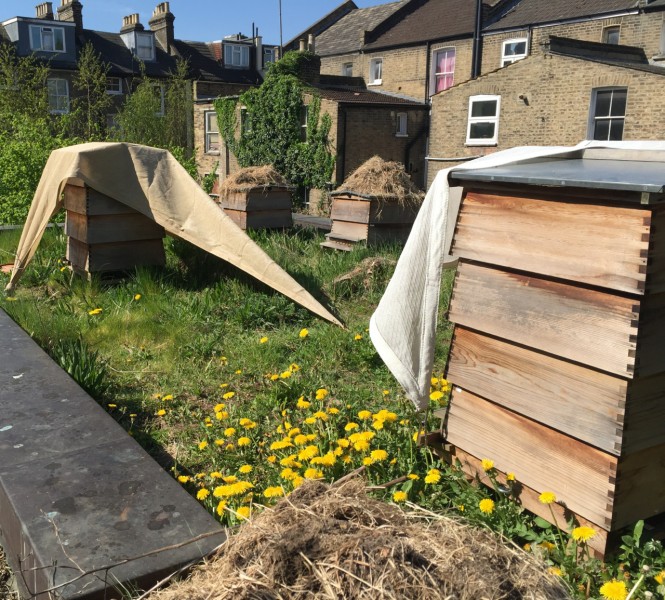Composites are great green roof plants. From the annuals, like camomile, to dandelions, they all provide a good nectar source. Pollinators, especially solitary bees, love to bath in the yellow flower heads.

Dandelions surround beehives on a green roof in London
Dandelions are the new fad!
Actually dandelions would appear to becoming a bit of a fad at the moment. A few ecologists have contacted me to question whether they should be specified as in green roof plant lists.
Now there is one green roof I know where there are a lot of dandelions. In early spring they were packed with bumblebees – great. This one was designed by one of the big consultancies that are now specifiying the plant to be plug planted into the roof. Well, I am sure that this looks good on paper, but why plant it. It will come on its own volition. So why not plant those that do not rely on the wind – such as Vipers bugloss or Birdsfoot trefoil. But why plant dandelions.
Composites are volunteers
In America, they call these kinds of colonisers, volunteers. Composites are classic colonisers. There, however, composite species that I wouldn’t encourage, notably non-native fleabanes, especially Canadian Fleabane. This leggy exotic is not harmful but it is not the most attractive plant and can take over badly installed green roofs. There is nothing better than pulling Canadians out of a green roof!
There are plenty of native composites that should be allowed to make there home on a green roof. One that gets a bad press is ragwort. Great for pollinators, like all composites its seeds are spread by the wind. At some point ragwort will appear on a green roof. Unless you plan to have roaming herds of horses on the roof, there is no issue at all with this great plant. There is nothing better that a Six-spotted burnet moth gracing the yellow heads of ragwort, or an army of yellow and black cinnabar caterpillars muching away. Besides even if you did have a herd of ponies on the roof, they are far too clever to eat this toxic plant.
Annuals give a splash of colour
Many of the annual plants we recommend in the guide are composites. Many annuals are very rare in the wild now, so adding these as seeds is a good idea. They of course give a good dash of colour in the first few years, but be warned, they will slowly disappear, Unless of courwse we get a real long drought, that breaks up the green roof soil. This should allow some of them to germinate and flower.
Join the small scale green roof community and get membership to this guide.